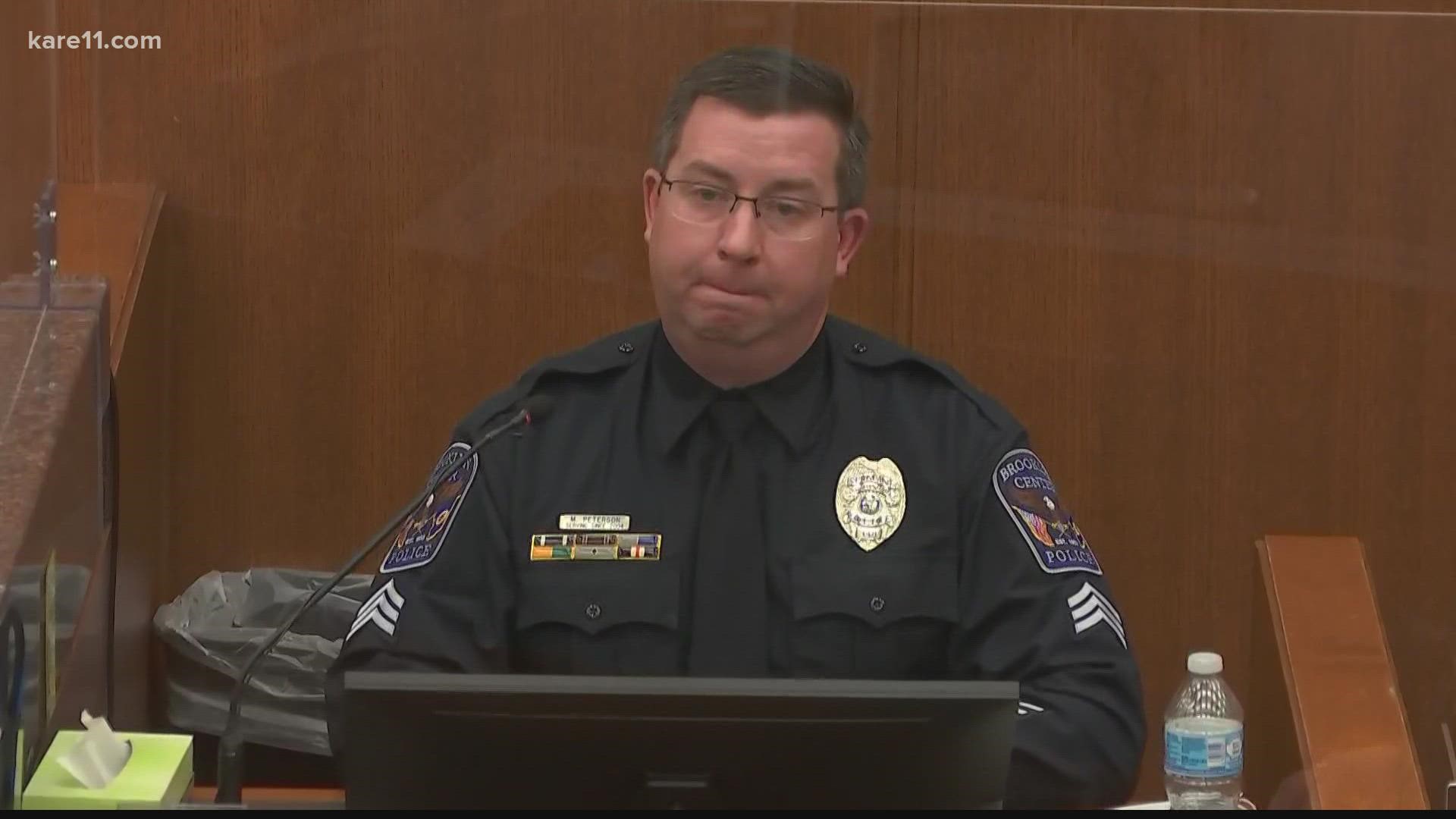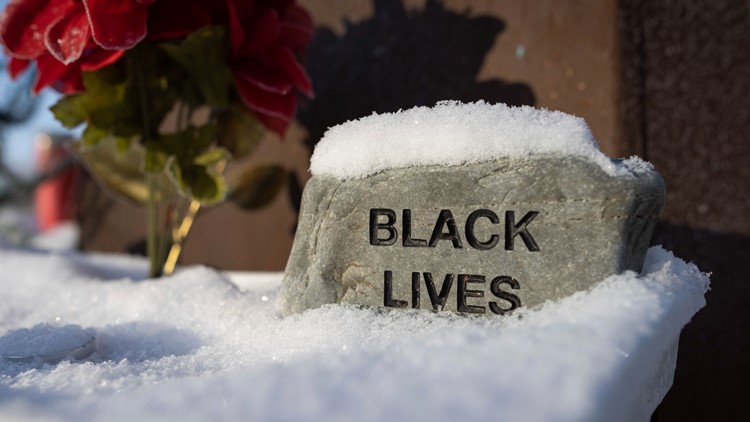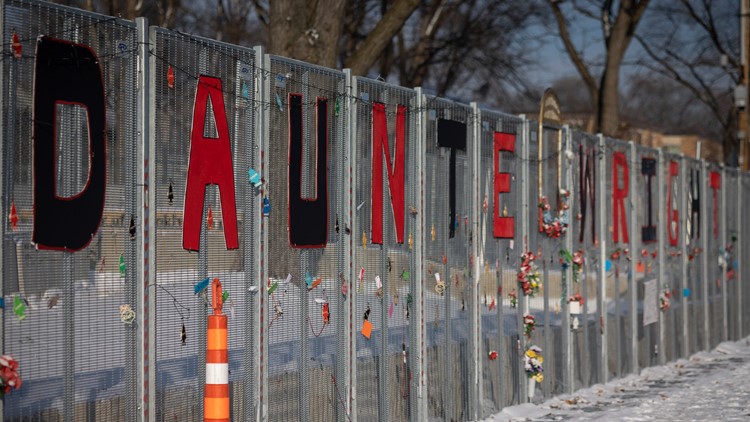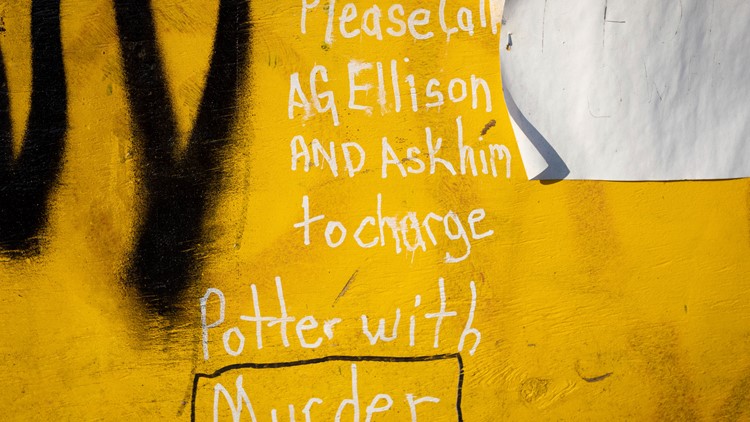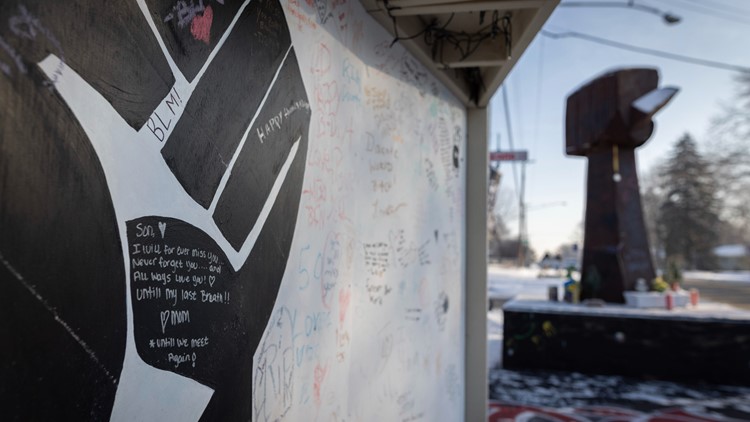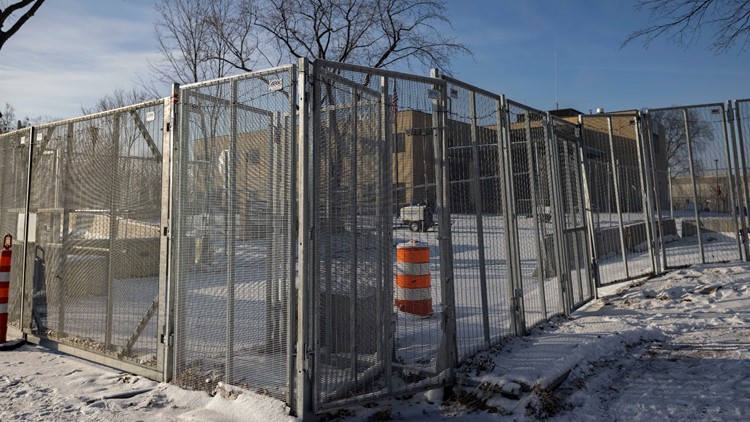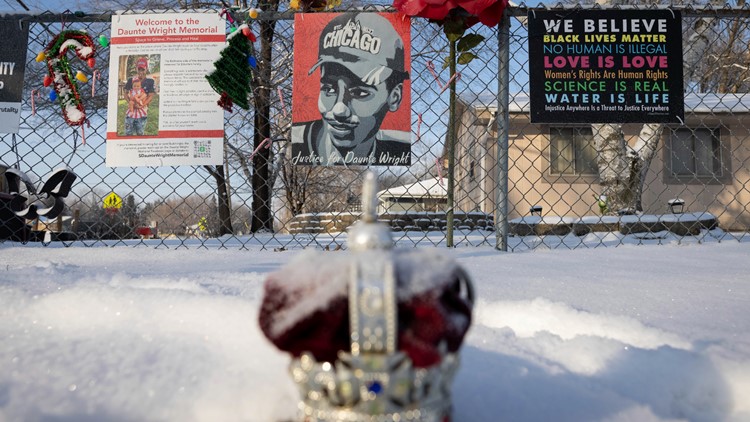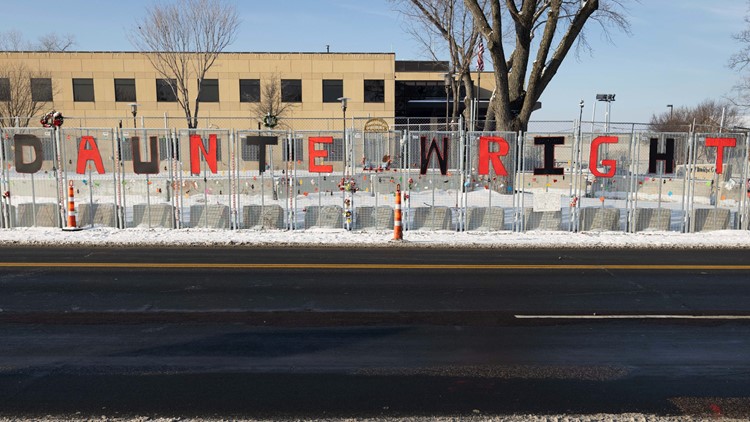MINNEAPOLIS —
- Sgt. Mike Peterson testifies that Potter received extensive use-of-force and scenario-based training
- Brooklyn Center commander Garett Flesland, who oversees officer training, calls Potter "a friend"
- On Monday, experts reviewed the differences between a gun and taser
- Assistant medical examiner talked jury through Daunte Wright's autopsy
- BCA forensic scientist described evidence documented at scene of Wright's death
Tuesday, Dec. 14, 2021
As the fifth day of testimony began in the trial of Kim Potter, the former Brooklyn Center police officer charged with manslaughter in the shooting death of Daunte Wright, Judge Regina Chu addressed two motions previously filed by the state. The first motion asked that evidence of bias by union members be allowed, as Kim Potter was a police union president as recently as 2019. Judge Chu rejected that motion.
The second motion dealt with the defense’s use of expert witnesses. Prosecutors said the defense has tried to turn other officers like Sgt. Johnson into expert witnesses and wanted the jury to disregard those opinions. The defense responded that the state didn’t object at the time of Johnson’s testimony and noted that he was the prosecution’s own witness. Judge Regina Chu said she will not order the jury to disregard Johnson’s opinion.
When testimony began around 10:45 a.m., the state called Commander Garett Flesland with the Brooklyn Center Police Department (BCPD) to the stand. Flesland told prosecutor Matthew Frank that he currently oversees trainers for the BCPD and reviews the programs and training that officers receive. Flesland told the court that Potter had been up-to-date on certain updated policies and procedures within the department.
Frank then asked Flesland about the training that Potter had received, saying she had been certified to use a Taser since 2002, and has received multiple recertifications since then. Frank showed photos of Potter wearing her utility belt, noting how she wore her Taser on her left – nondominant – side.
Defense attorney Earl Gray led the cross examination for Flesland, who testified that Potter was never accused of abusing her power during her time with the BCPD. After laying out the circumstances of Wright’s traffic stop, Flesland agreed with Gray that an officer would be within their right to stop a suspect from leaving the scene. When asked about his relationship with Potter, Flesland said, "She’s a good cop. She’s a good person. She’s a friend.”
The second and final witness called to the stand Tuesday was Sgt. Mike Peterson, also with the BCPD. Peterson was asked to explain Taser training and use, as it aligns with BCPD policy.
A certified instructor since 2007, Peterson told prosecutor Frank his goal is to cross-train officers on how to use as many platforms as they can so they retain a commonality of techniques, and a vast array of responses that they can use when presented with a real-life scenario.
Peterson went on to explain the ins and outs of Taser training, going over what’s included in the curriculum and in-person reality-based training with an instructor and other students. He explained to the court how a Taser is supposed to be worn and holstered, and echoed Flesland’s testimony about where to wear the weapon on the body to reduce the risk of accidentally drawing the wrong weapon.
Peterson confirmed that every officer needs to pass training and be certified before they can carry and use a Taser. They must also sign a document acknowledging they have read and understand Taser policy, warnings, risks, and safety rules. Frank showed the court a document that Peterson had signed off on, confirming Potter had been properly trained, with the most recent training completed on March 2, 2021.
Frank showed the court several more official records of Potter’s attendance at training sessions, of which most of them included scenario-based and use-of-force training.
Frank ended his line of questioning by asking Peterson if he had ever seen another officer draw handgun when they meant to draw their Taser, to which he replied no. He then told Frank he couldn’t remember a specific time it could have happened to an officer during training.
Judge Chu ended court for the day before the defense could cross examine Peterson.
Court is scheduled to resume Wednesday at 9 a.m.
LIVE UPDATES
3:24 p.m.
When court returned from a short afternoon break, prosecutor Matthew Frank continued his questioning of Peterson. Frank began by having Peterson confirm that everyone who takes the required Taser training must sign a release acknowledging that they have read and understand Taser policy, warnings, risks, and safety rules.
Among them, the description of the Taser’s “preferred target zone” on a person’s body, which the materials describe as the lower torso in an effort to reduce the risk of hitting sensitive body areas. Frank showed materials stating the risks of aiming for a person’s chest, which could cause the electricity from the Taser to interfere with an intended target’s heart.
After presenting more documents related to Taser training, Frank showed the court a document that Peterson had signed off on, acknowledging Potter had been properly trained in using the new model of Taser obtained by the BCPD in 2020. The document was dated March 2, 2021.
Frank proceeded to enter several documents into the record, showing examples of Potter’s attendance record and hours put in at training sessions from 2016 through 2020. Most of them included scenario-based and use-of-force training.
Frank ended his line of questioning by asking Peterson if he had ever seen another officer draw handgun when they meant to draw their Taser, to which he replied no. He then told Frank he couldn’t remember a specific time it could have happened to an officer during training.
Judge Chu ended court for the day before the defense could cross examine Peterson.
Court is scheduled to resume Wednesday at 9 a.m.
2 p.m.
Sgt. Mike Peterson of the Brooklyn Center Police Department was called on by the prosecution to explain Taser training and use on the stand, as it aligns with BCPD policy.
Peterson said he’s been a certified Taser instructor with the BCPD since 2007. He said he is an informal leader as a use-of-force instructor, which also includes training with firearms. He told prosecutor Frank the goal is to cross-train officers on how to use as many platforms as they can so they retain a commonality of techniques, and a vast array of responses that they can use when presented with a real-life scenario.
Peterson said training includes a PowerPoint presentation, along with learning materials put forth by the Taser’s parent company. He said the BCPD Taser policy, as well as requirements mandated by Taser itself, are reviewed in a classroom setting.
Trainees are then required to attend an eight-hour training in person with an instructor and other students.
Peterson told the court the BCPD policy requires that an officer receive training and certification before they can carry and use a Taser. They are also required to get recertified annually to receive updates about the product.
Peterson went on to tell to the court how a Taser is supposed to be worn and holstered, explaining the difference between an officer’s support side, where a Taser is supposed to be worn, and their dominant side, where the officer usually wears their handgun. He said this system is meant to reduce the risk of accidentally drawing the wrong weapon.
Peterson agreed it is the BCPD’s policy for officers to perform a function test of the Taser before they begin each shift. Frank asked him to describe what changes are visible when a Taser is drawn and activated, then demonstrated to the court how it was done.
Peterson went on to tell to the court how a Taser is supposed to be worn and holstered, explaining the difference between an officer’s support side, where a Taser is supposed to be worn, and their dominant side, where the officer usually wears their handgun. He said this system is meant to reduce the risk of accidentally drawing the wrong weapon.
Peterson agreed it is the BCPD’s policy for officers to perform a function test of the Taser before they begin each shift. Frank asked him to describe what changes are visible when a Taser is drawn and activated, then demonstrated to the court how it was done.
12:45 p.m.
After a break, prosecutor Matthew Frank continued to question Brooklyn Center Commander Garett Flesland about Taser training in the department. He told the courtroom that he carries his gun on his right (dominant) side and Taser on his left side, which he said is department policy and how officers have been trained. Flesland testified that Potter had been certified to use a Taser since December 2002. He said she was trained and re-certified multiple times since then, mostly recently in March 2021. Photos from multiple occasions showed that Kim Potter wore her Taser on her left side (nondominant/reaction side) and had it positioned to draw with her left hand. She wore her Taser the same way the day Daunte Wright was killed.
During cross examination by defense attorney Earl Gray, Flesland testified that during her time with the Brooklyn Center Police Department, Kim Potter was never accused of abusing her power. Gray laid out circumstances surrounding Daunte Wright’s traffic stop and asked if an officer would be within their right to stop a suspect from leaving the scene. Flesland responded, “the way you laid it out, yes.” When asked about his relationship with Potter, Flesland said, "She’s a good cop. She’s a good person. She’s a friend.”
During re-direct questioning by the prosecution, Flesland was asked if officers have to consider using less force if they can. He said yes, if it’s reasonable. Flesland testified that his answers to Gray’s questions were based only on the portions of videos that he saw, but he's not an expert on what happened that day.
11 a.m.
During a jury break, Judge Regina Chu and lawyers for the prosecution and defense discussed Blakely factors, which are factors that could lead to an enhanced sentence for Kim Potter. The factors in this case are that after the shooting, Daunte Wright’s car struck an occupied vehicle, and that she abused a position of authority. Potter said on the record that she wants those factors tried after any guilty verdict, not during this trial.
10:45 a.m.
The state’s first witness Tuesday was Commander Garett Flesland with the Brooklyn Center Police Department. Flesland started as a patrol officer with the department in 2000 and worked his way up through the ranks, first as a detective, next as a sergeant and then a commander. Commander Flesland currently oversees trainers for the Brooklyn Center Police Department and reviews the programs and training that officers receive. Prosecutor Matthew Frank reviewed several department policies with Flesland, including the Brooklyn Center code of ethics, fitness for duty requirements, use of force and more. Frank had Flesland tell the courtroom the dates that certain policies and procedures were updated, and then the dates Potter acknowledged and signed she received them.
While on the stand, Commander Flesland testified that according to policy, a gross misdemeanor warrant isn’t serious enough to initiate a pursuit. Daunte Wright had a misdemeanor warrant.
9 a.m.
Court resumed at 9 a.m. Tuesday with Judge Regina Chu addressing two motions filed by the state. In the first motion, the state wanted to allow evidence of bias by union members because Kim Potter was a police union president. Judge Chu rejected the motion. The second motion dealt with the defense’s use of expert witnesses. Prosecutors said the defense has tried to turn other officers like Sgt. Johnson into expert witnesses and wanted the jury to disregard those opinions. The defense responded that the state didn’t object at the time of Johnson’s testimony and noted that he was the prosecution’s own witness. Judge Regina Chu said she will not order the jury to disregard Johnson’s opinion.
On Monday, the state called experts to review Daunte Wright's autopsy, comment on the differences between a firearm and a Taser and speak about the evidence found at the scene of the shooting.
Potter is charged with first and second-degree manslaughter in the April 11, 2021 shooting of Wright in Brooklyn Center.
Dr. Lorren Jackson: An assistant medical examiner for the Hennepin County Medical Examiner's Office, Dr. Jackson said Wright's injury wasn't survivable. He said he determined the cause of death was the gunshot wound and the manner of death was determined to be a homicide.
Melissa Loren: A forensic scientist with the Minnesota Bureau of Criminal Apprehension (BCA), Loren identified several pieces of evidence she collected, including pictures of Wright’s car. She also identified a discharged cartridge casing found in the front seat of the vehicle, said she had gathered “plant material” in the car.
BCA Special Agent Brent Peterson: Peterson has worked more than 70 use-of-force investigations with the BCA, and as part of his investigation into Wright’s death reviewed video of the traffic stop and subsequent shooting.
BCA senior special agent Sam McGinnis: McGinnis told Assistant Hennepin County Attorney Joshua Larson that after he briefly responded to the scene of the shooting, he gathered documentation including paperwork, witness interviews and reports from various officers.
Eric Koeppen: A forensic scientist in the biology division with the BCA, Koeppen testified that he was tasked with examining and processing evidence for DNA profiling in the case. He confirmed that three of four sources of blood from within Wright's vehicle matched Wright's DNA profile. The fourth blood sample that he tested was from an unknown woman, but said he wasn't given a DNA profile of Wright's girlfriend, Alayna Albrecht-Payton, for comparison.
Travis Melland: Melland works with the BCA crime lab and told prosecutors he was asked to compare two items — a spent cartridge casing and a bullet — obtained by the BCA, and determine whether they were shot from the third item, a firearm.

